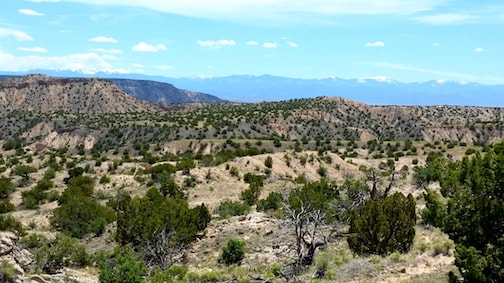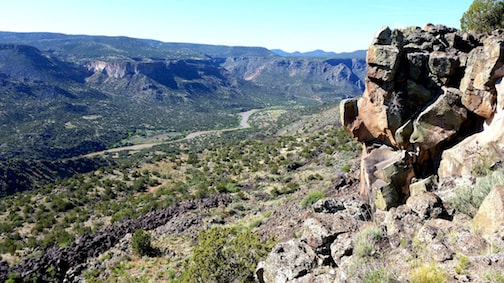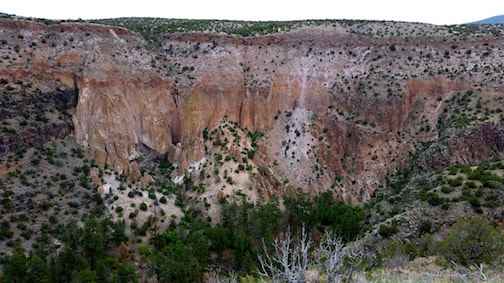The enchanting landscape of New Mexico has its roots deep in the geological history of our planet. However, once we’re willing to take the long view, we might find it surprising to realize that most of western North America’s distinctive scenery has taken shape in only the last 15 million years or so of Earth’s history. This represents less than the last quarter of the Cenozoic Era – our era, the time of grasses and flowering plants, birds and mammals.
There are three great themes to consider: regional uplift, extensional faulting, and a distinctive mode of volcanism.
In the last 15 million years, the interior West has risen, for reasons imperfectly understood, as a block, 1.5 to 2 kilometers above sea level. Denver and Albuquerque are both mile-high cities, and Santa Fe and Flagstaff stand 7000 feet above the sea. This region-wide uplift helps explain not only our modern climate, dry and cool, but also something called the Exhumation of the Rockies: the reincarnation of old, worn-down hills into spectacular high standing mountains.
There are three great themes to consider: regional uplift, extensional faulting, and a distinctive mode of volcanism.
In the last 15 million years, the interior West has risen, for reasons imperfectly understood, as a block, 1.5 to 2 kilometers above sea level. Denver and Albuquerque are both mile-high cities, and Santa Fe and Flagstaff stand 7000 feet above the sea. This region-wide uplift helps explain not only our modern climate, dry and cool, but also something called the Exhumation of the Rockies: the reincarnation of old, worn-down hills into spectacular high standing mountains.
In the last 15 million years, much of the interior West has experienced a region-wide extension, or pulling-apart, of its underlying crust. An important component of this stretching extends as system of desert basins and fault-bounded uplifts, from Leadville, Colorado, south, well into Mexico and West Texas. This crustal extension helps explain the rift valleys that bisect New Mexico from top to bottom, as well as the sharp-faced mountain ranges so characteristic of the central and southern parts of the state.
In the last 15 million years, much of the interior West has experienced a bipolar sort of volcanic activity very different from the more understandable volcanism of its earlier geologic history. Recent volcanoes here have either erupted fluid flows of dark basalt, liquid rock bled directly up from the Earth’s hot dry mantle, or they have exploded into gigatons of volcanic ash and pumice, smothering the landscape under ash flows of pale rhyolite – a very silica-rich lava generated in the Earth’s wet upper crust. This so-called bimodal magmatism leads to very different landforms.
No doubt each of these three themes is a different, but related, expression of some planetary disturbance deep beneath the American West. Geologist continue to ponder the causes.




 RSS Feed
RSS Feed
